Many soba restaurants offer both “morisoba” and “zarusoba” in their cold soba menu.The visual difference lies in the presence of “nori” on the soba. If chopped nori is on top, it’s called “zarusoba,” while the one without nori is commonly known as “morisoba.” Why were these two similar dishes born? Today, we are going to find out about Zaru Soba and let’s discover its history!
What is Zaru Soba?
What is Soba?
Soba (そば) is a Japanese noodle made from buckwheat flour, processed from the grains of soba. It’s not just a noodle; it’s a culinary delight in Japan. Often contrasted with “Chuka soba” for Chinese noodles or “Okinawa soba” for Okinawan noodles, it’s known as “Nihon soba” or “Wa soba.” While the term “soba” is generally associated with buckwheat noodles, it’s also used for non-buckwheat noodles like “Chuka soba” and “Okinawa soba.”
Soba has a rich history and is a quintessential Japanese dish, enjoyed in various styles and occasions throughout the year. Served in specialized dishes or baskets, soba can be found in restaurants, chains, and even as packaged noodles in stores. Traditionally, eating soba on New Year’s Eve is a symbolic tradition in Japan. However, it’s essential to note that soba can be an allergen, potentially causing soba allergy, and extreme caution is necessary for those affected.
What is Zaru Soba?
Zaru Soba is a traditional Japanese dish made with buckwheat noodles, served cold. The name “zaru” comes from the bamboo sieve or colander, called a “zaru,” used to drain and cool the soba noodles. These noodles are typically served on the zaru, accompanied by a dipping sauce known as “tsuyu.”
The dish is often garnished with toppings like chopped green onions, grated radish, or shredded nori (seaweed). Zaru Soba is a refreshing and light option, perfect for hot weather, and it’s enjoyed by dipping the noodles into the flavorful tsuyu sauce before eating.
History
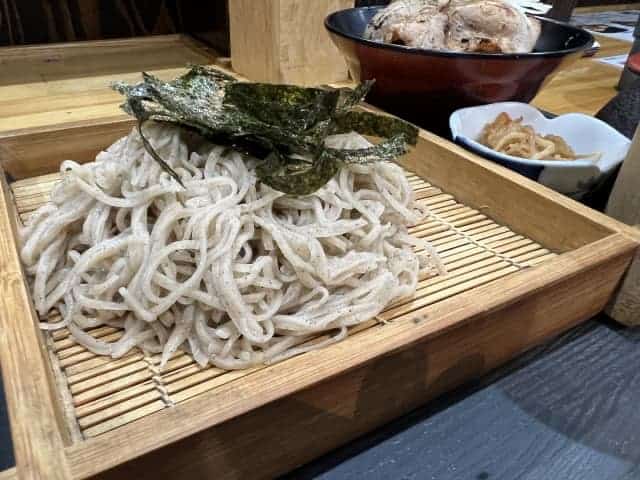
The origin of Soba
The introduction of soba to Japan predates the Nara period, having originated from the Chinese mainland. Initially considered a miscellaneous grain, soba was used to make porridge (kayu) or boiled as “sobagaki,” kneaded soba flour. Rather than cultivated as a staple, it was grown sparingly, likely in preparation for emergencies.
The Beginning of Zaru Soba in the Edo and Meiji period
In the past, soba took a different form, shaped like dumplings from kneaded buckwheat flour. Noodles made their appearance later, sliced for dipping into broth. During the Edo period, the trend of “bukkake soba” started, where noodles received a direct pour of broth, akin to today’s “kake soba.” In contrast, the traditional “tsuke-men” style involved serving noodles on a plate or in a steamer, dipped into broth, evolving into what we now know as “mori soba.”
Around the mid-Edo period, a clever shop introduced “zaru soba,” serving noodles on a draining bamboo sieve (“zaru”). This method prevented noodles from becoming watery, maintaining their deliciousness until the last bite, gaining popularity and inspiring other shops to follow suit. In the Meiji era, to distinguish “zaru soba” as a slightly upscale soba variety, they introduced additions like mirin in soba dipping sauce and nori toppings, creating the distinction between “mori soba” and “zaru soba.” Although the distinction has become blurred today, the higher cost of “zaru soba” reflects its historical background.
How to differentiate between Mori Soba and Zaru Soba
By observing the absence of nori
To differentiate between Mori Soba and Zaru Soba, you can easily identify them by checking for the presence or absence of nori (seaweed). Mori Soba doesn’t have any toppings, whereas Zaru Soba is garnished with nori. People started adding nori to Zaru Soba during the Meiji era to set it apart, considering nori a luxurious addition back then. Even today, many soba establishments appear to distinguish between Mori Soba and Zaru Soba based on whether nori is included.
By the dipping sauce
You can also differentiate them by looking at the dipping sauce. In the past, they created a flavorful dipping sauce known as “zaru-jiru” for Zaru Soba, incorporating mirin into the broth. Although dedicated zaru-jiru is less common nowadays, some places still distinguish between Mori Soba and Zaru Soba by offering different variations of the dipping sauce.
Zaru Soba FAQ
- Is Zaru Soba gluten-free?
Traditional Zaru Soba noodles are made from buckwheat flour, which is naturally gluten-free. However, it’s essential to check the specific ingredients used in the soba noodles, as some commercially produced varieties might include wheat flour. If you have gluten sensitivities or allergies, it’s advisable to choose soba noodles labeled explicitly as gluten-free.
- Can I customize the tsuyu sauce for Zaru Soba?
Yes, you can customize the tsuyu sauce according to your taste preferences. The base of the sauce typically includes soy sauce, mirin, and dashi (fish and seaweed stock). Adjusting the ratio of these ingredients allows you to create a dipping sauce with a sweeter or saltier profile. Additionally, some people enjoy adding grated ginger or citrus (such as yuzu) for extra flavor dimensions.
How to make Zaru Soba?
Recipe for Soba
Ingredients
| Ingredients (Soba) | |
| Soba Flour | 240g |
| Wheat Flour | 60g |
| Water | 138cc |
| Soba Flour for Dusting | As needed |
Instructions
Lightly mix soba flour and wheat flour, then sift through a sieve to ensure a homogeneous mixture.
Transfer the mixture to a bowl. Gradually incorporate 70% of the pre-divided water (slightly warmed in winter) evenly. Add the remaining water, kneading and mixing it to form a cohesive mass.
Knead the mixture by hand approximately 50-100 times. After kneading, place the dough in a plastic bag and let it rest for about 10-20 minutes.
Once rested, flatten the dough into a round shape by hand, then further stretch it with a rolling pin. Lightly dust the rolling pin and roll the dough, stretching it in all directions to approach a square shape, repeating the process 3-4 times.
Generously dust the dough, fold it once from right to left and twice from bottom to top. Cut the dough into your preferred thickness, with around 1.4mm being standard.
- Gently place the soba in vigorously boiling water.
- Boil for 25-35 seconds after the submerged soba floats to the surface.
- Retrieve the cooked soba with a sieve, rinse it under cold running water to remove excess starch, shock the noodles in ice water to firm them up, drain the water, and plate the soba.
In a pot, mix soy sauce and mirin, add sugar carefully while preventing boiling. Stop heating just before it reaches a boil and let it cool.
Recipe for Zaru Soba Dipping Sauce
Ingredients
| For Men-tsuyu (Soba Dipping Sauce) | |
| Sake | 60cc |
| Mirin | 120cc |
| Soy sauce | 180cc |
| Bonito Flakes (Shaved) | 20g |
| For one serving of dipping sauce | |
| Prepared men-tsuyu | 50cc |
| Water | 50-80cc |
Instructions
In a pot, combine sake and mirin, then place it over medium heat. Bring the mixture to a boil to allow the alcohol to evaporate.
Add soy sauce to the boiling mixture. Just before reaching a full boil, introduce bonito flakes. Reduce the heat and let it simmer for 2-3 minutes.
Place a sieve with kitchen paper on top. Strain the simmered mixture into a clean storage container, ensuring a smooth consistency.
Dilute the finished men-tsuyu with water according to your preference. Adjust the dilution to achieve the desired taste for your dipping sauce.
Recommended Stores/ Restaurants
Asakusa Juroku (浅草じゅうろく)
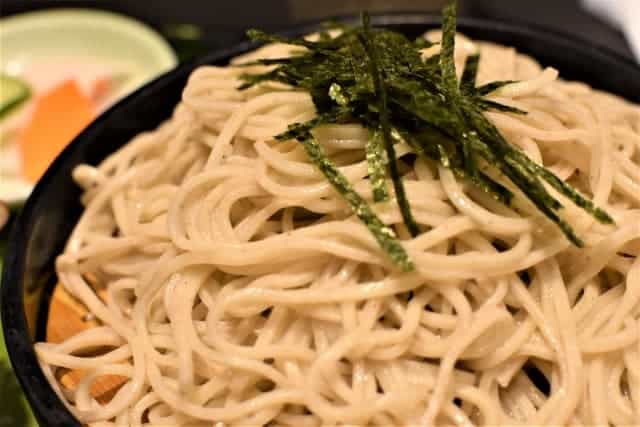
Asakusa Juroku, a quiet soba restaurant in Asakusa, Tokyo, is becoming popular for its focus on fresh, seasonal ingredients. They get their produce daily from Tsukiji and serve handmade 28% buckwheat soba, accompanied by Japanese sake. The soba flour, sourced from Fukui, Nagano, and Ibaraki, is carefully chosen or mixed based on daily conditions. The soba, intentionally made with 28% buckwheat, highlights the rich aroma of soba flour and provides a pleasing texture. The broth, made with thick shavings primarily from honkarebushi, is selected to complement the soba. Visit Asakusa Juroku for a taste of their delicious soba.
Soba Osame (蕎麦おさめ)
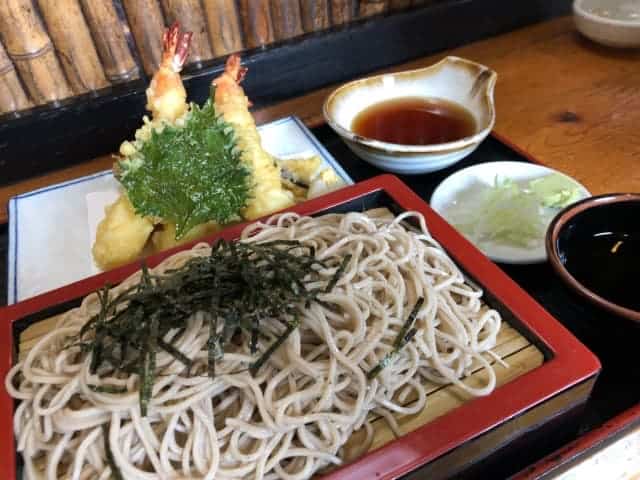
“Soba Osame” is located in a hidden spot, about a 7-minute walk from Mejiro Station, tucked away in the back alleys off Mejiro-dori. In April 2023, the restaurant relocated from Nishi-Azabu to its current location and is featured in the “Michelin Guide Tokyo” as a Bib Gourmand-listed soba restaurant. The serene atmosphere of the renovated traditional house offers a perfect setting to savor their meticulously crafted soba.
Sobaya Moriiro (蕎麦や もりいろ)
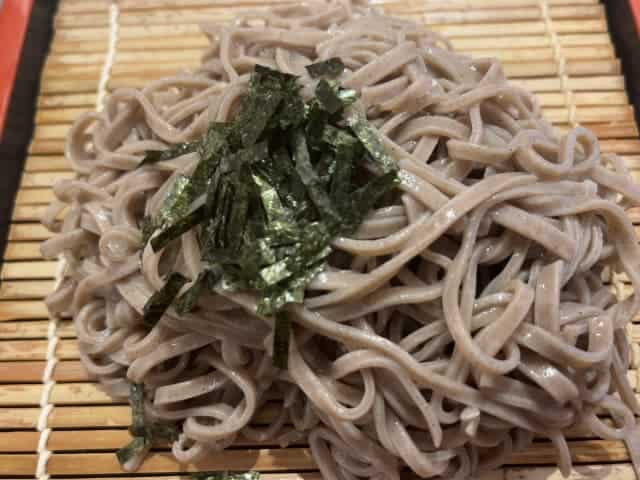
“Soba-ya Mori Iro” in Ota Ward, Omori, offers a serene atmosphere where you can enjoy Belgian beer, fruit wine, and sake alongside various dishes and carefully crafted soba. With a convenient 1-minute walk from Omorimachi Station, the accessibility adds to its charm. The clean interior, based on white wood, provides a space to savor authentic soba with a focus on the origin, variety, and field of the buckwheat. The owner personally seeks high-quality soba, visiting various regions, engaging with producers, and ensuring the quality by observing the cultivation process. The soba ratio varies daily based on the condition of the buckwheat flour, creating a harmonious blend of authentic soba and flavorful katsuobushi-infused dipping sauce. If you have a chance, please come visit this restaurant!
Takeaway
Zaru Soba is a classic Japanese dish known for its simplicity and great taste. It features thin buckwheat noodles served cold on a bamboo sieve, offering a refreshing dining experience. The dipping sauce, made with soy sauce, mirin, and dashi, complements the nutty flavor of the soba noodles. Toppings like nori add extra flair, making Zaru Soba a versatile and enjoyable dish. Whether you try it at recommended restaurants or make it at home using our recipes, Zaru Soba promises a traditional and delightful culinary experience. So, explore our suggestions or use our recipes to make your favorite Zaru Soba at home.
You can find other recipes of soba here or see below for more details!
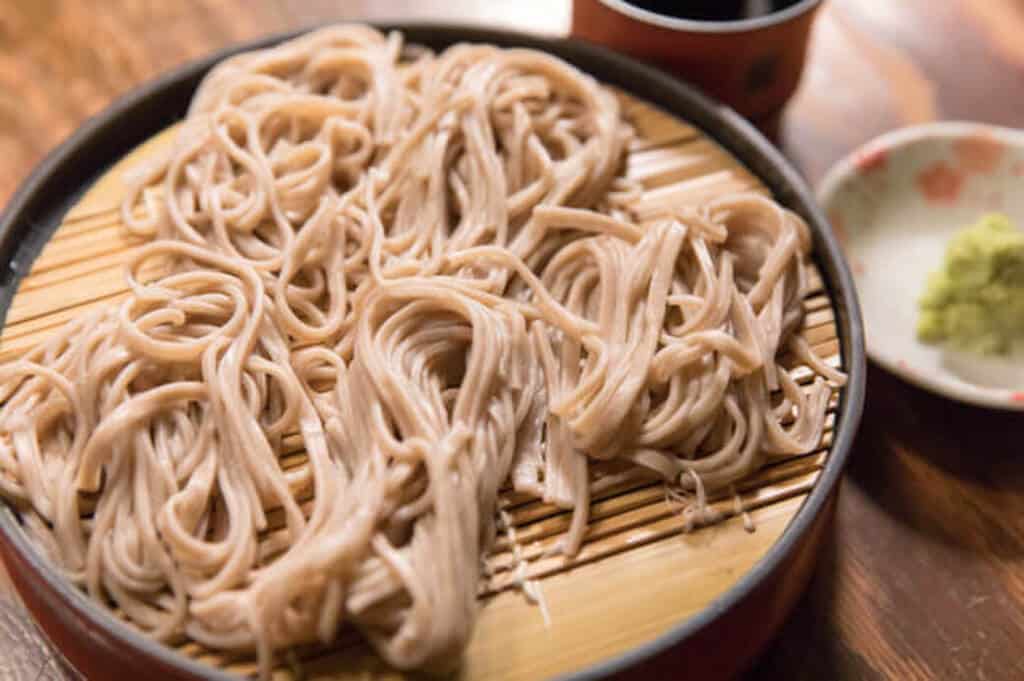
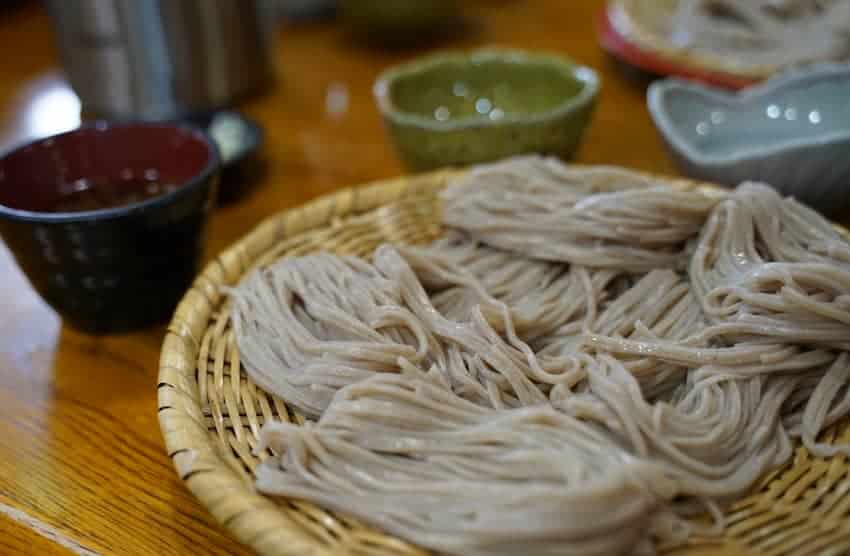
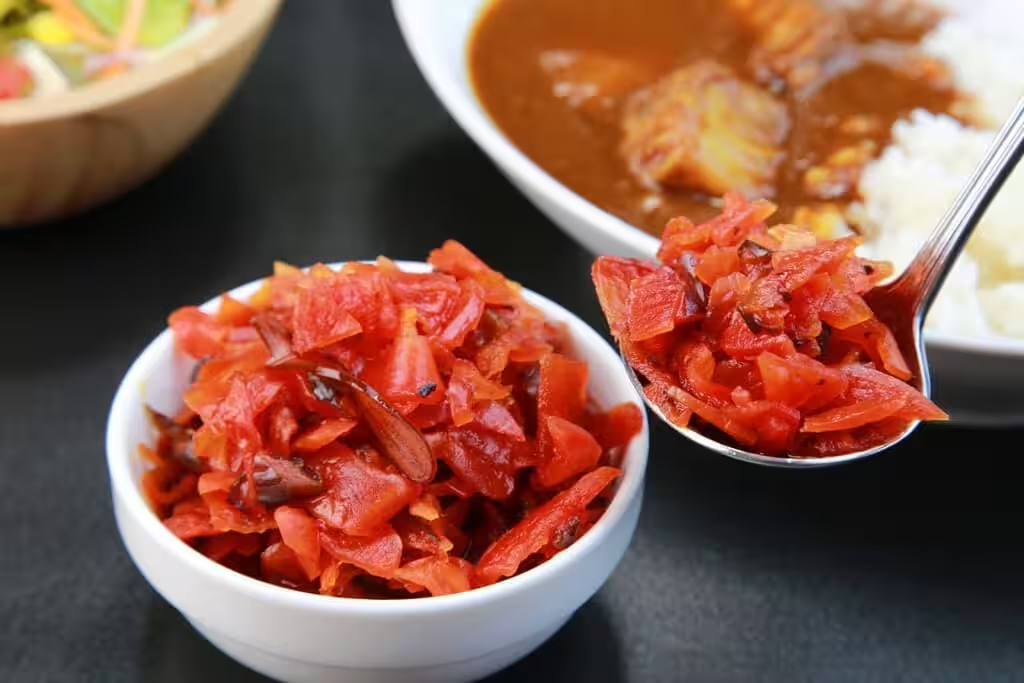
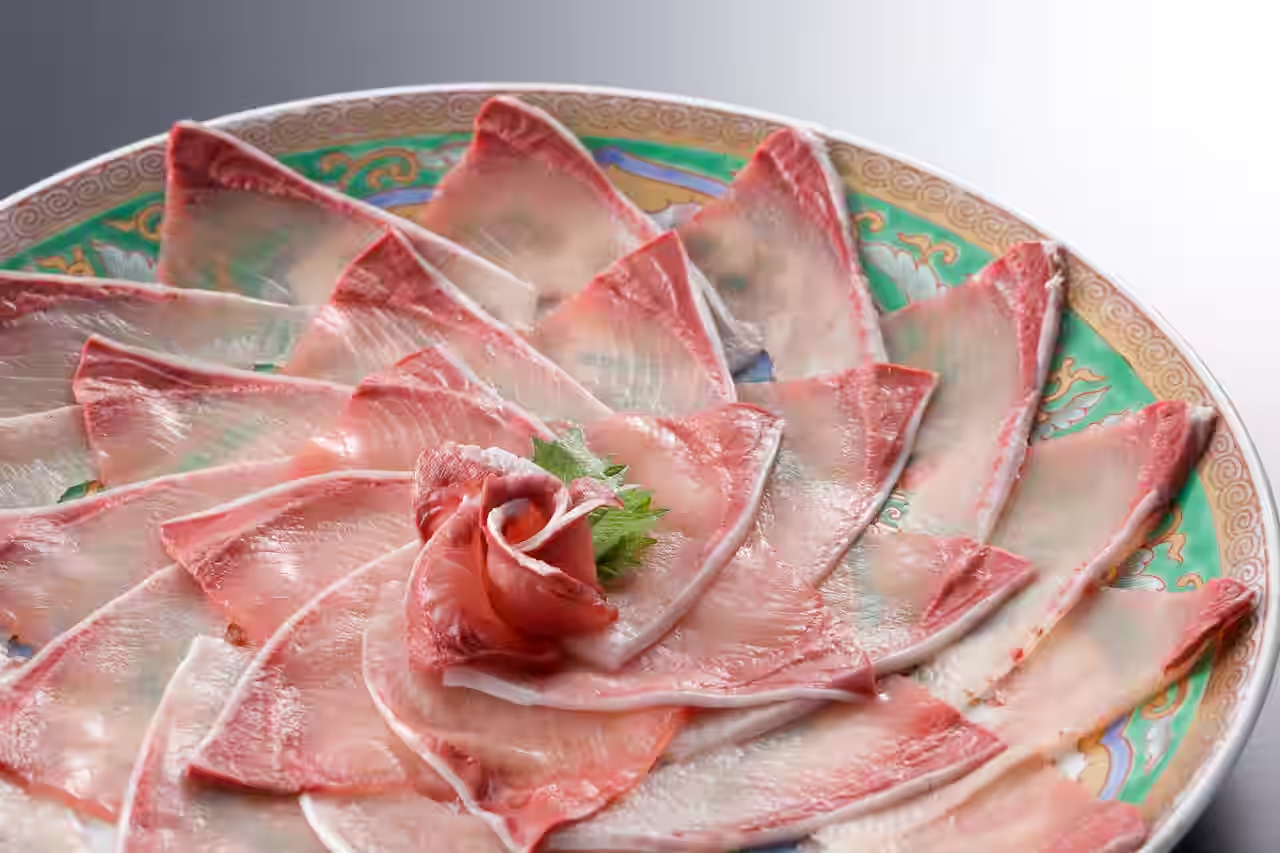
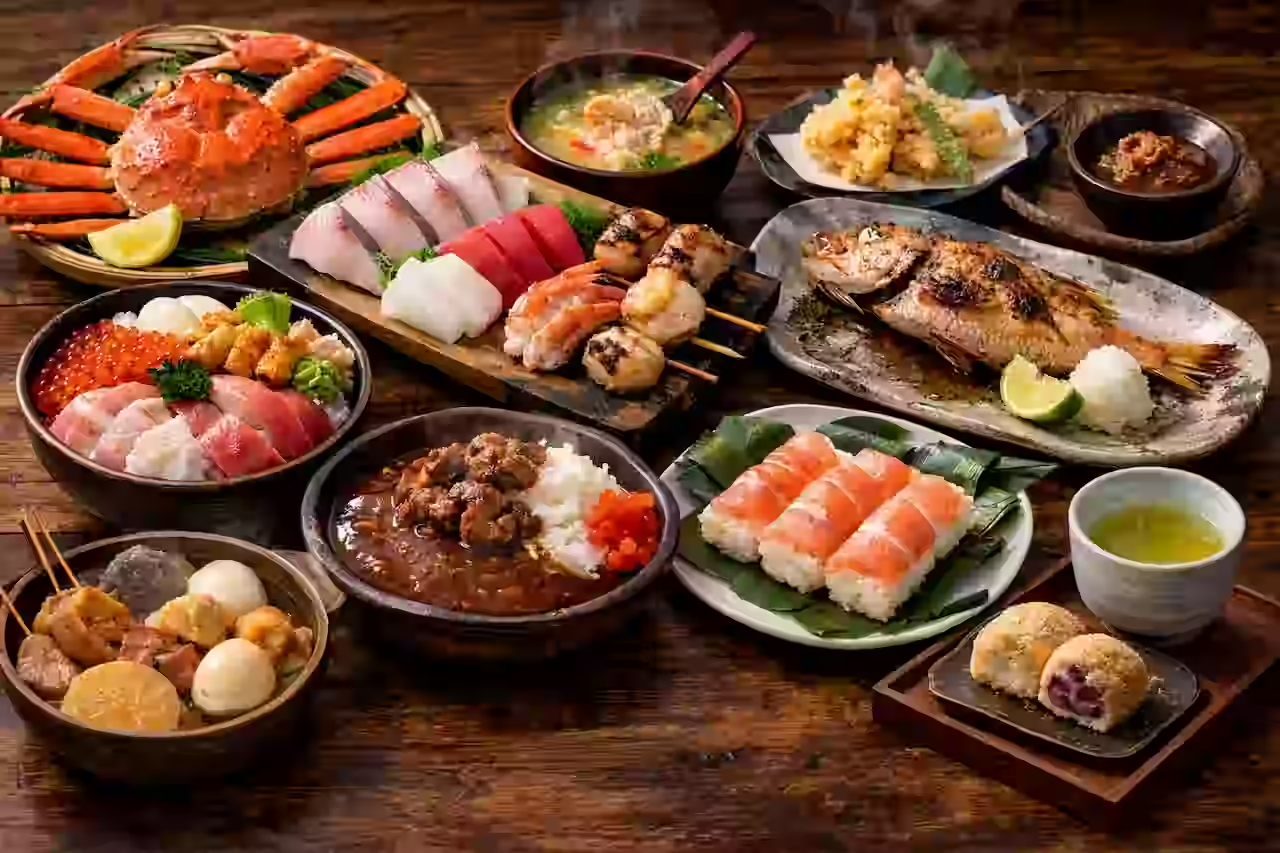
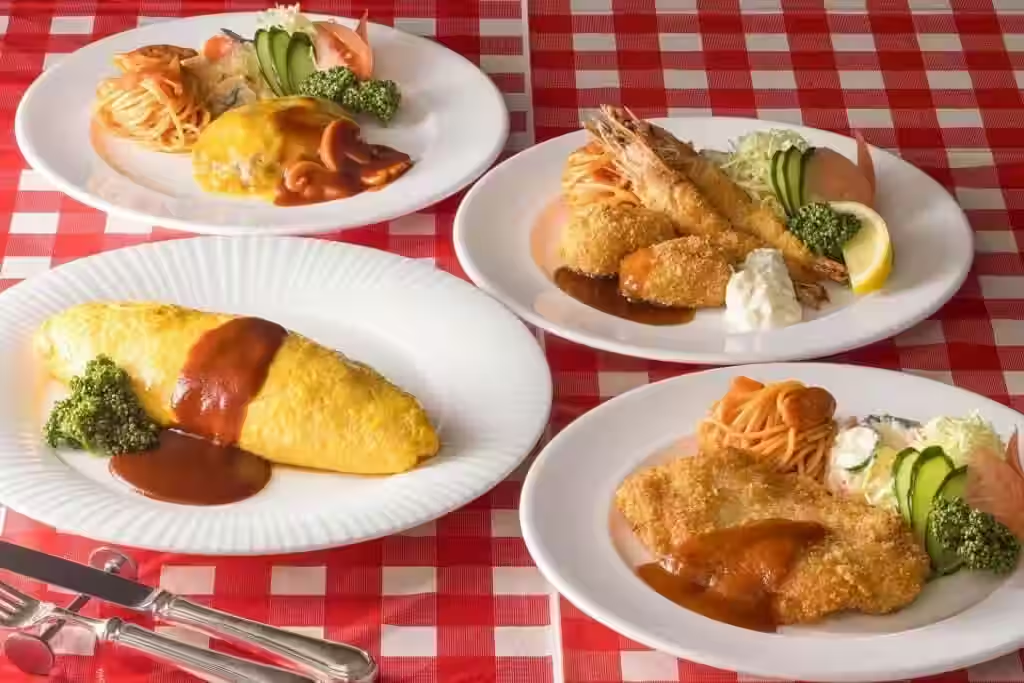
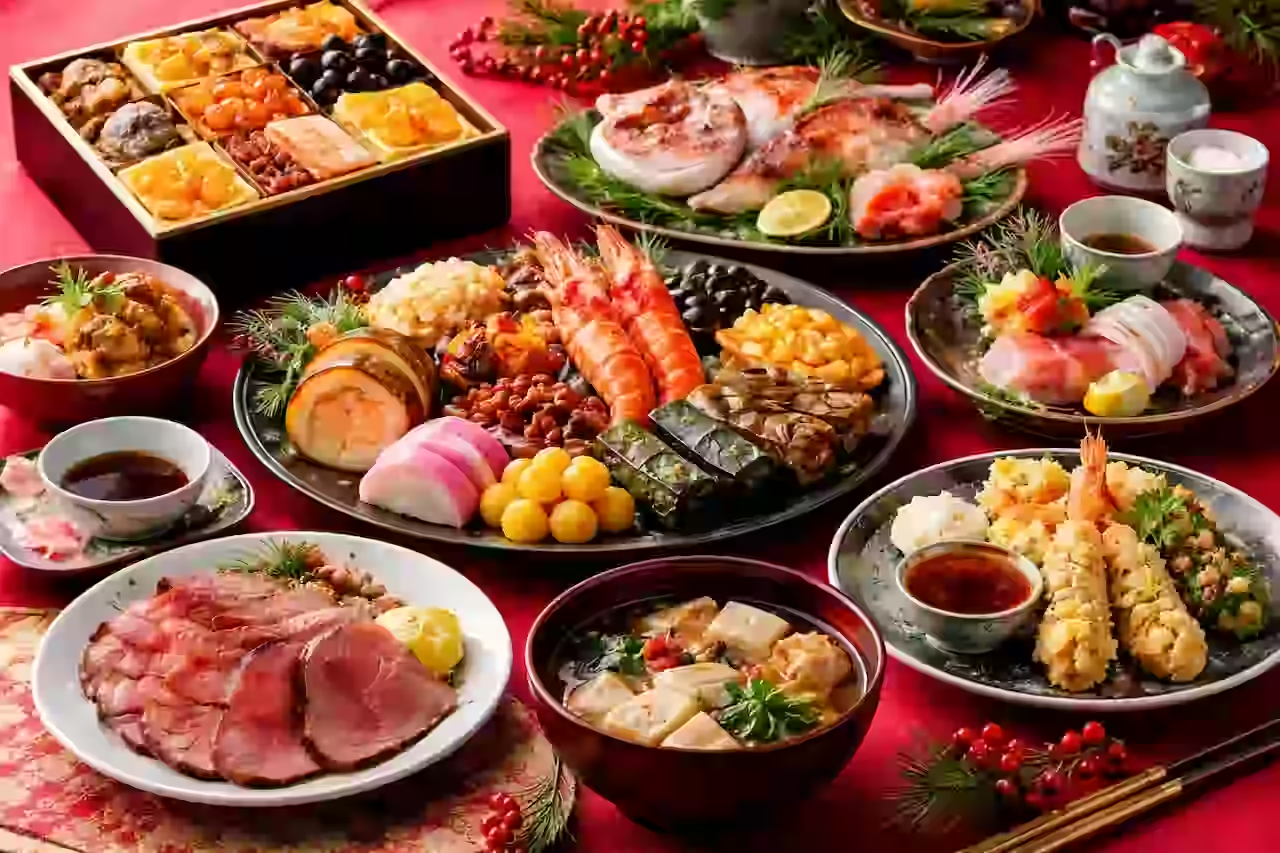

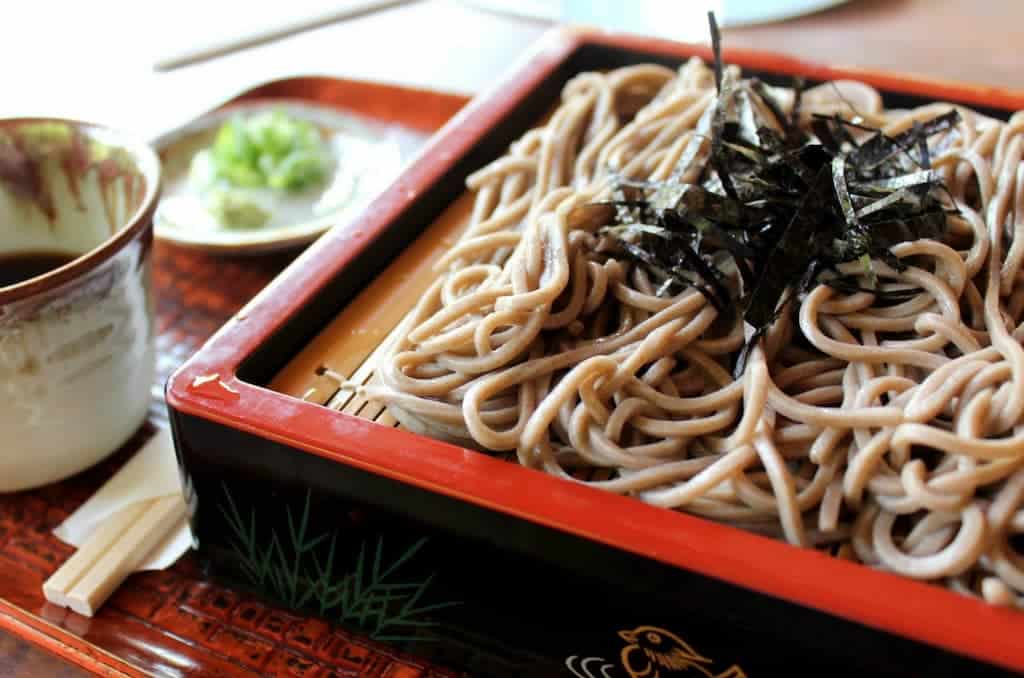
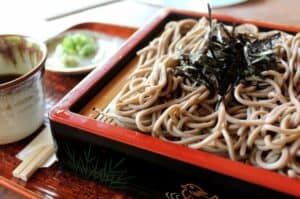
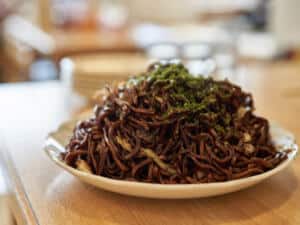
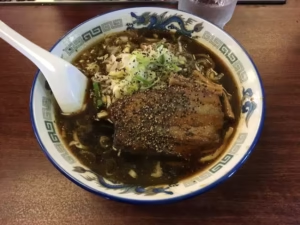
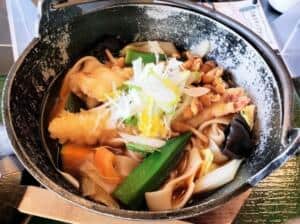
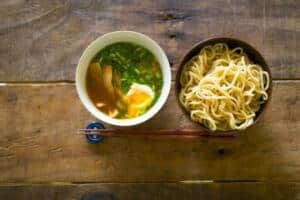
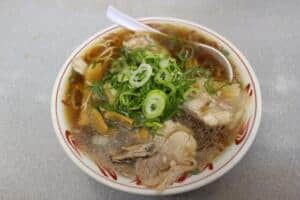
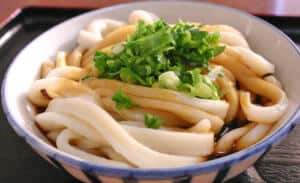
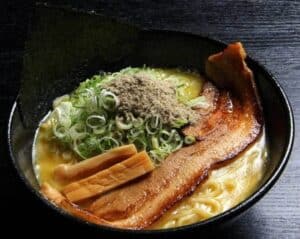
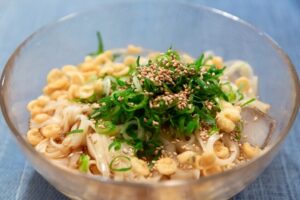
Comments